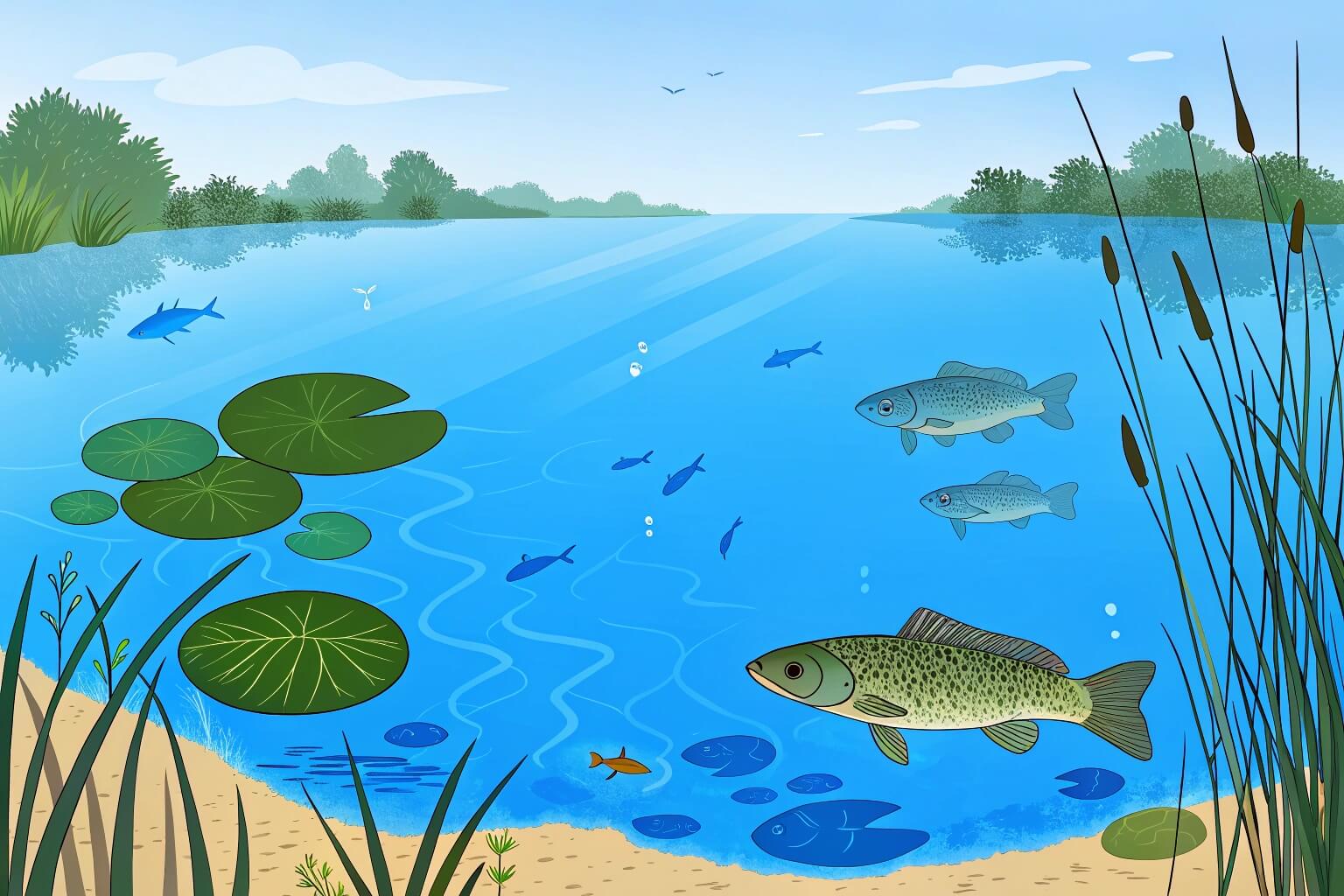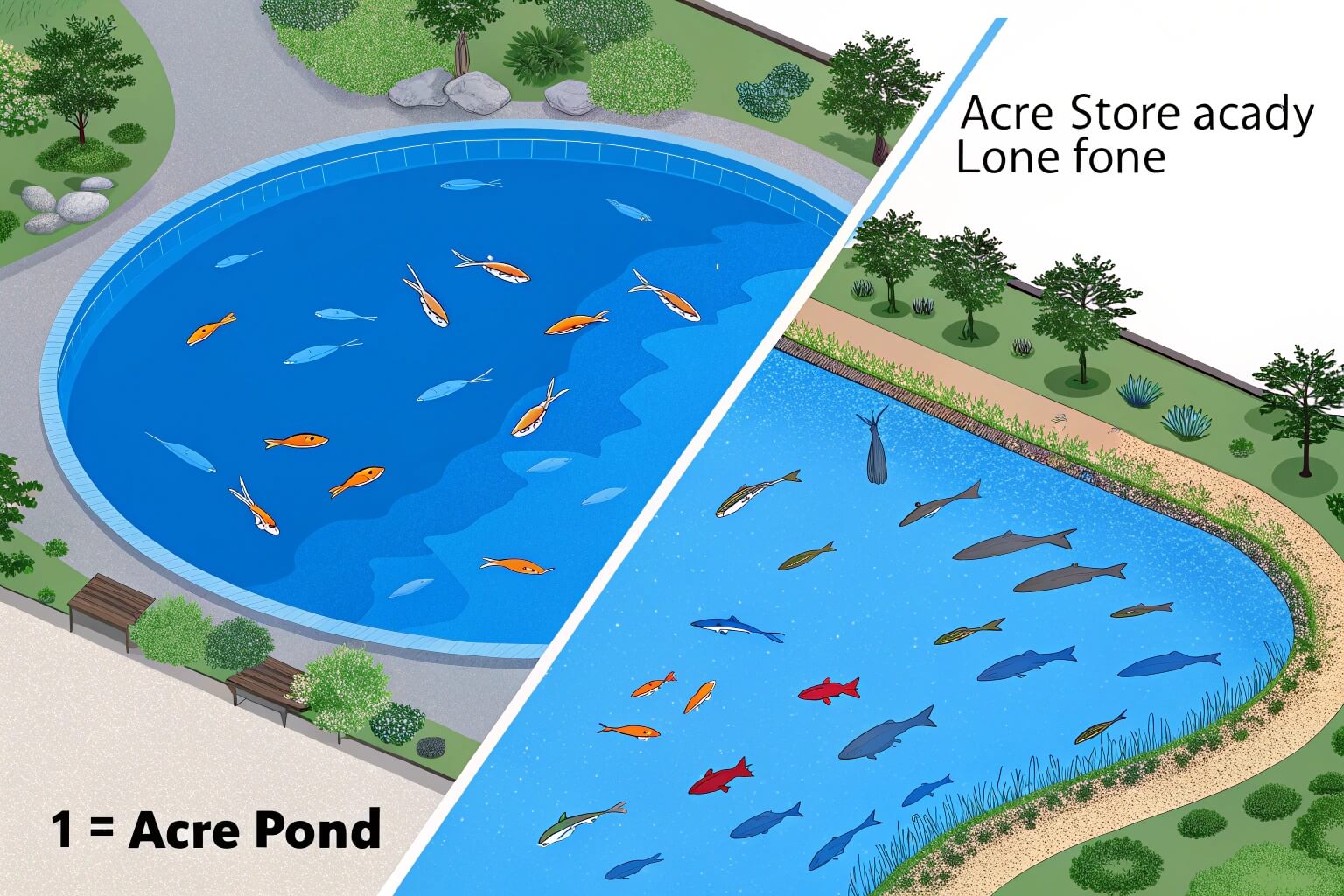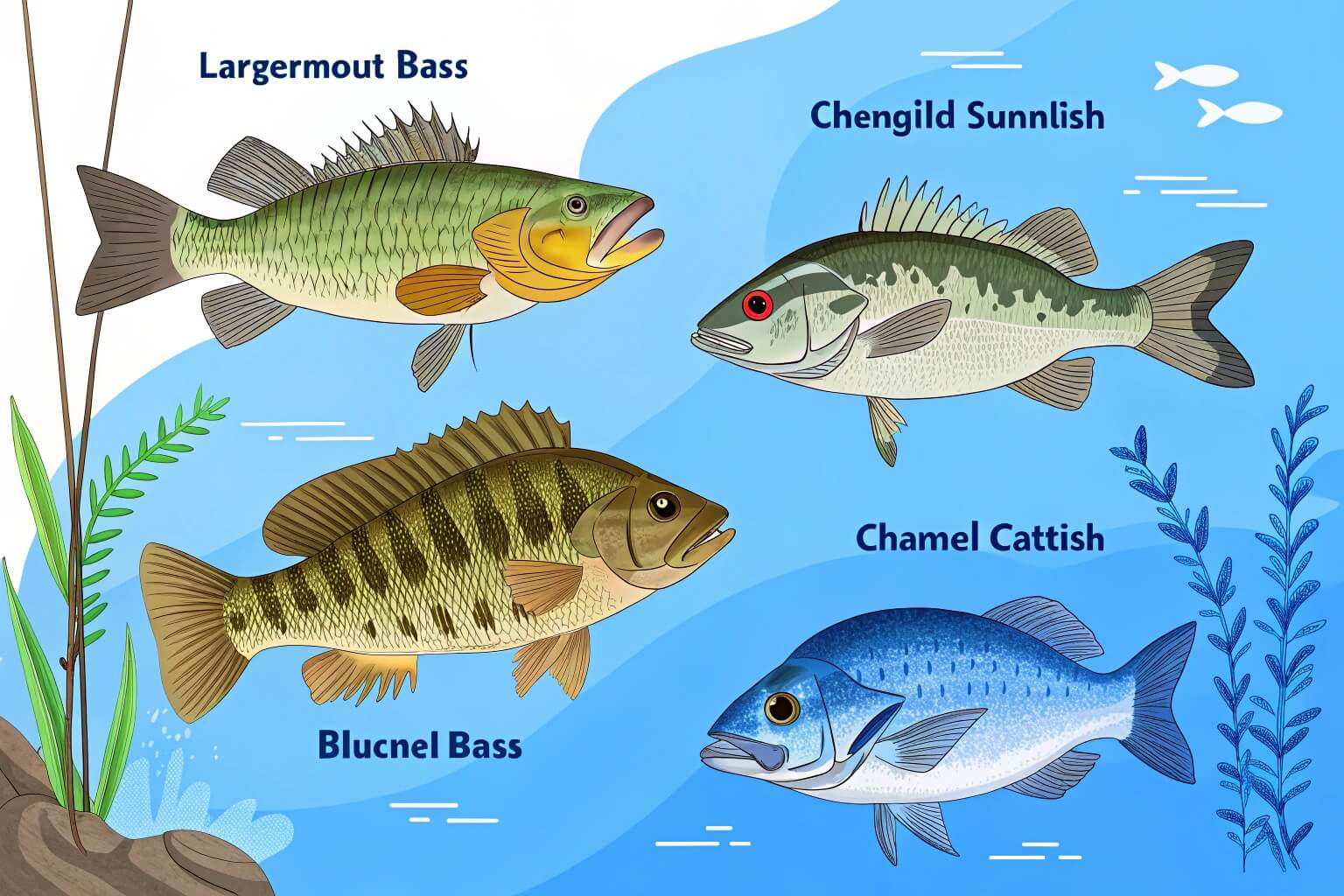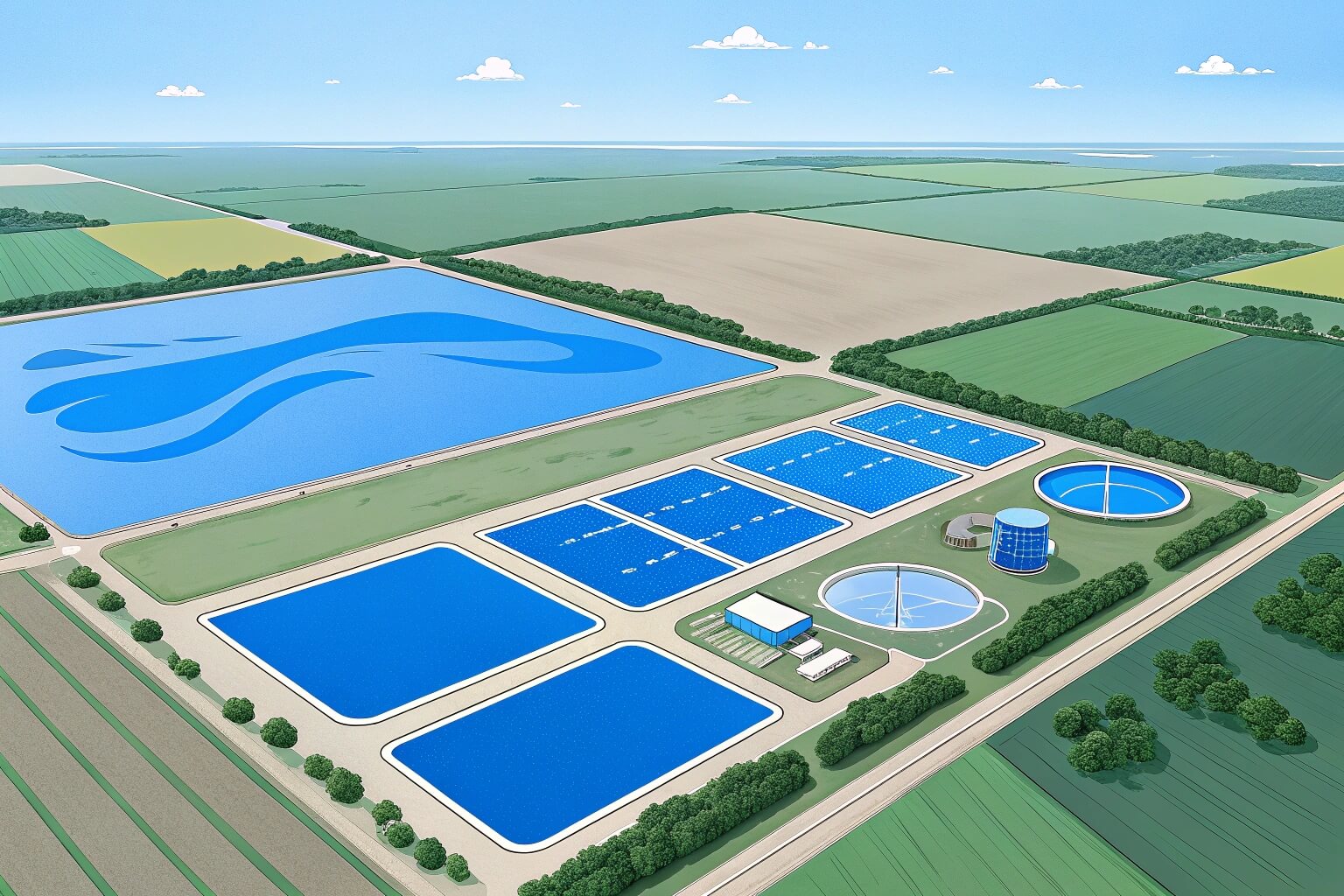What will be the fish production in 1 acre of the pond?
Struggling to estimate your pond's potential? Wondering how much fish you can actually harvest? Unlock the secrets to maximizing yield in your one-acre fish pond right here.
Fish production in a 1-acre pond varies greatly, typically ranging from 500 to over 5,000 pounds per year. Key factors include fish species, stocking density, water quality, feeding practices, and overall management intensity. Proper planning is essential for good results.

Understanding potential yield is just the start. Many factors influence how much your specific pond can produce. Let's dive deeper into the details that truly matter for successful fish farming.
How Many Fish Can You Stock in a 1 Acre Pond?
Worried about overcrowding your pond? Unsure how many fish is too many for one acre? Finding the right balance is key to healthy growth and avoiding problems.
You can typically stock between 100 to 3,000 fish per acre, depending heavily on the species, management level (like aeration and feeding), and your goals (recreation vs. intensive farming). Start conservatively.

Determining the ideal stocking density isn't a simple numbers game. It involves balancing the needs of the fish with the pond's capacity and your ability to manage it. Think of it like managing resources; too many fish strain the system, leading to poor growth and health issues. As someone who has seen many aquaculture setups, I can tell you that pushing limits without proper support rarely ends well.
Factors Influencing Stocking Density
The number one factor is the fish species1. Some fish, like channel catfish or tilapia, tolerate higher densities, especially with intensive management. Others, like largemouth bass needed for a balanced sport fishery, require much lower densities. Your management intensity2 is crucial too. Are you providing supplemental feed? Do you have aeration systems? An unmanaged pond relying only on natural food can support far fewer fish (maybe 100-200 bass and bluegill) than a pond with daily feeding and mechanical aeration (potentially thousands of catfish per acre). Water quality parameters like dissolved oxygen are limiting factors; aeration directly addresses this, allowing for higher densities.
Management Goals and Density
Your goals3 dictate the appropriate density. For a recreational fishing pond focused on bass and bluegill, a balanced predator-prey ratio is needed. This often means stocking around 100 fingerling bass and 500-1000 fingerling bluegill per acre initially. For commercial food fish production, like catfish farming, densities can reach 2,000-5,000 fish per acre, but this demands significant investment in feed and aeration. Overstocking without adequate support leads to stressed fish, disease outbreaks, and poor growth – reducing, not increasing, your final production. Starting lower and adjusting based on observation is often the best approach. Using flexible systems, like our Bancy collapsible tanks for initial rearing or quarantine, can also help manage stocking effectively before introducing fish to the main pond.
How Big Will Bass Get in a 1 Acre Pond?
Dreaming of landing trophy bass from your pond? Wondering if a one-acre space is enough for them to reach impressive sizes? Growth potential depends on more than just pond size.
Largemouth bass in a well-managed 1-acre pond can potentially reach 3-5 pounds or more within several years. However, growth rate depends heavily on food availability (forage fish), genetics, and water quality.

A one-acre pond can grow big bass, but it requires careful management. It’s not guaranteed just by having the water. Think of it like gardening in a small plot; you need the right conditions and resources for plants to thrive. Bass are predators, and their growth is directly tied to what they can eat. I've seen ponds teeming with small, stunted bass because the food supply couldn't keep up.
The Role of Forage Fish
The single most important factor for bass growth is a plentiful supply of appropriately sized forage fish4, primarily bluegill. A common management strategy involves stocking bluegill first, allowing them to reproduce and establish a population before introducing bass fingerlings. A ratio often recommended is 5-10 bluegill for every bass. If the bluegill population isn't abundant and reproducing successfully, the bass won't have enough food to grow large quickly. You might need to periodically restock forage fish or manage harvest rates to maintain this balance. Without enough food, bass growth slows dramatically, and they may never reach trophy size, regardless of pond size.
Other Growth Factors: Genetics5 and Environment
Genetics play a role too. Some bass strains are genetically predisposed to faster growth and larger potential size. When stocking, inquire about the genetic background if trophy fish are your main goal. Beyond food and genetics, the pond environment6 matters. Good water quality, sufficient cover (like submerged structures or vegetation) where bass can ambush prey, and appropriate water temperatures are all necessary. Stress from poor water quality or overcrowding (even with forage fish) can hinder growth. Managing aquatic vegetation is also key – too much can make it hard for bass to hunt effectively. In essence, a one-acre pond provides the space, but you provide the conditions for growth through active management.
What Fish Is Good for a 1 Acre Pond?
Choosing the right fish for your pond? Overwhelmed by the options and unsure which species will thrive? Selecting the best fish depends entirely on your goals and pond conditions.
Common choices for a 1-acre pond include Largemouth Bass and Bluegill for recreational fishing, or Channel Catfish and Tilapia (in warmer climates) for food production. Choose based on your goals and management capacity.

Picking the right residents for your pond is like casting for a play – you need the right actors for the roles you envision. Do you want exciting fishing action, a source of food for your table, or perhaps biological weed control? Each goal points towards different species. As someone involved in providing aquaculture solutions like fish tanks, I understand the importance of matching the species to the system and the owner's objectives.
Fish for Recreational Fishing
If your primary goal is sport fishing7, the classic combination is Largemouth Bass and Bluegill. Bass are the top predator, providing the angling excitement, while bluegill serve as the primary forage base and also offer fishing opportunities, especially for kids. Sunfish species like Redear Sunfish can sometimes be added to help control snails. This combination creates a balanced ecosystem if managed correctly (maintaining the 5:1 to 10:1 bluegill-to-bass ratio). Stocking rates are typically low (e.g., 100 bass, 500-1000 bluegill fingerlings per acre) to allow for natural growth and reproduction within the pond's carrying capacity. Success depends on maintaining that crucial predator-prey balance.
Fish for Food Production
If you're focused on raising fish to eat, Channel Catfish8 are a very popular choice. They are hardy, grow well in ponds, tolerate higher stocking densities (especially with feeding and aeration), and readily accept commercial feed. They don't typically reproduce successfully in ponds unless spawning structures are provided, which allows for better population control. Tilapia are another option, especially in warmer climates (they don't survive cold winters). They grow very fast and reproduce prolifically, which can be good for food but can also lead to overpopulation and stunting if not managed. Sometimes they are used in conjunction with bass, where the bass help control tilapia numbers. Remember, intensive food fish production requires more active management – regular feeding and potentially aeration – compared to a simple bass-bluegill pond.
Here's a simple comparison:
| Feature | Bass/Bluegill Combo | Channel Catfish | Tilapia9 (Warm Climates) |
|---|---|---|---|
| Primary Goal | Recreational Fishing | Food Production | Food Production |
| Management | Moderate (Balance) | High (Feeding/Aeration) | High (Density/Temp) |
| Feeding | Relies on Natural Forage | Supplemental Feed Needed | Supplemental Feed Needed |
| Density | Low | Moderate to High | Moderate to High |
| Hardiness | Moderate | High | Moderate (Temp Sensitive) |
What Size Pond for 1000 Fish?
Planning a pond and targeting a specific number of fish? Wondering how big it needs to be for 1000 fish? The required pond size depends entirely on the fish species and your management plan.
For 1000 fish, pond size can range from less than 0.5 acres for intensively managed catfish or tilapia, to 5-10 acres for a balanced bass/bluegill recreational pond. There's no single answer.

Thinking about pond size based only on the number of fish is like asking how big a house needs to be for 4 people – it depends on their needs and lifestyle! A small apartment might work, or they might need a large farmhouse. Similarly, 1000 small bluegill need less space and resources than 1000 market-size catfish or 1000 predatory bass. The species, their size, and how you manage the pond are the real determining factors.
Intensive vs. Extensive Management
The key difference lies in management intensity. If you plan to raise 1000 Channel Catfish10 for food with intensive management (daily feeding, constant aeration), you might achieve this in a pond as small as 0.25 to 0.5 acres. Here, you are providing most of the resources (food, oxygen). However, if you want 1000 fish in a balanced recreational pond, likely comprising around 100-200 bass and 800-900 bluegill, relying mainly on natural productivity, you would need a much larger pond, perhaps 1 to 2 acres or more, to provide enough natural food and space. Trying to stock 1000 bass in a small pond without adequate forage would lead to disaster.
Calculating Space Requirements
Instead of starting with the number of fish, it's often better to consider stocking density guidelines for your chosen species and management style.
- Intensive Catfish11: 2,000 - 5,000+ fish/acre. For 1000 catfish, this means 1000 / 5000 = 0.2 acres (minimum) to 1000 / 2000 = 0.5 acres.
- Standard Bass/Bluegill12: ~100 bass + ~500-1000 bluegill/acre (total ~600-1100 fish/acre). To reach roughly 1000 total fish, you'd need around 1 acre.
- Unmanaged Pond: Significantly lower densities, maybe only 100-200 fish total per acre sustainable long-term. 1000 fish would need 5-10 acres.
Water quality, depth, and available structure also play roles. Deeper ponds offer more stable temperatures and volume. Structures provide habitat. Remember, these are estimates. Consulting with local fisheries experts or experienced suppliers like us at Bancy can help tailor recommendations to your specific situation and goals. We often advise clients on tank sizes for controlled environments, and the principles of matching density to system capacity apply equally to ponds.
Conclusion
Maximizing fish production in a 1-acre pond involves understanding species, stocking density, and active management. Success depends on careful planning and adapting to your specific pond's conditions and goals.
-
Understanding the best fish species for your pond can optimize growth and health, ensuring a successful aquaculture setup. ↩
-
Exploring management intensity can help you maximize your pond's potential and ensure fish thrive under your care. ↩
-
Identifying your goals is crucial for effective stocking density, leading to better fish health and production outcomes. ↩
-
Understanding the best forage fish can help you optimize your pond management for larger bass. ↩
-
Exploring the impact of genetics on bass can guide your stocking decisions for trophy fish. ↩
-
Learning about pond environment factors can enhance your management strategies for healthier bass. ↩
-
Explore this link to discover the ideal fish species for sport fishing, ensuring a thrilling angling experience. ↩
-
Learn about the advantages of Channel Catfish for food production, including their hardiness and growth potential. ↩
-
Find out effective management strategies for Tilapia in ponds to maximize food production and prevent overpopulation. ↩
-
Explore this link to understand the specific requirements for raising Channel Catfish effectively in a pond. ↩
-
Learn about intensive management techniques for catfish farming to maximize your pond's productivity and fish health. ↩
-
Discover the best practices for stocking Bass and Bluegill to ensure a balanced and thriving pond ecosystem. ↩